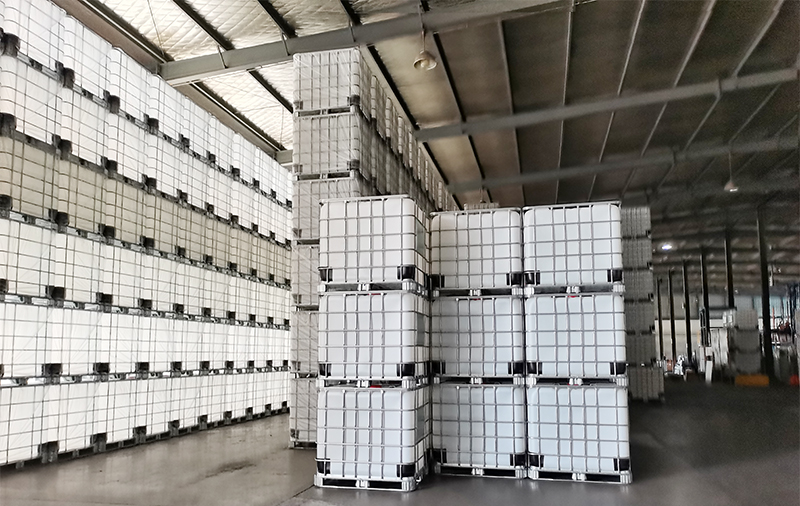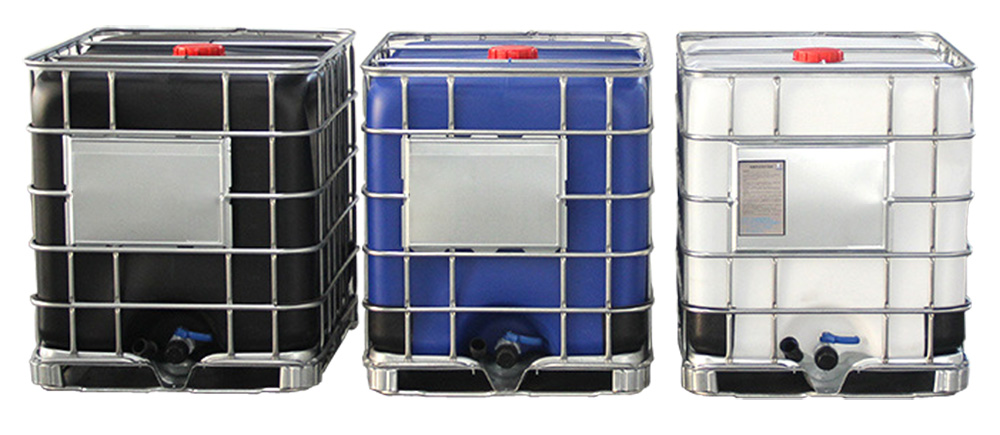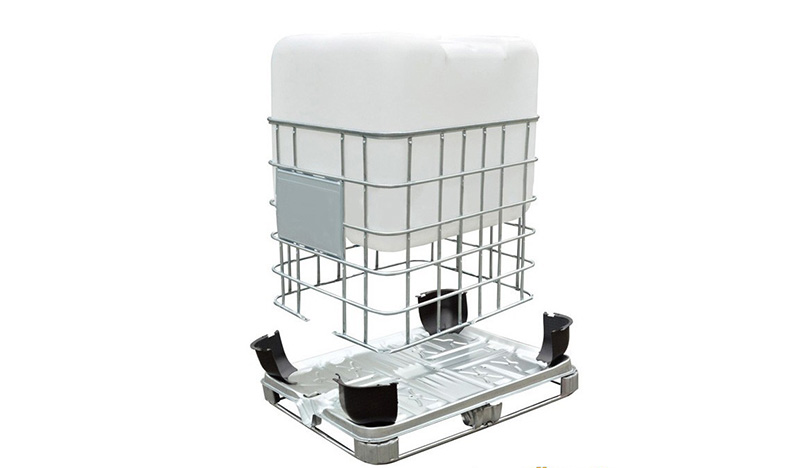
Imagine a world where storing and transporting liquids and bulk materials becomes seamless and efficient. That's where Intermediate Bulk Containers (IBCs) come into play. These versatile tanks have revolutionized industries, offering a reliable solution for a wide range of applications. Whether you're in the chemical, pharmaceutical, or food industry, understanding the sizes of IBC tanks is crucial for maximizing productivity and meeting specific requirements. In this guide, we'll delve into the world of IBC tanks, decoding their sizes and empowering you to make informed decisions for your business needs. Get ready to unlock the secrets behind IBC tank sizes and discover how they can elevate your operations to new heights.
Exploring the commonly available standard sizes of IBC tanks
When it comes to IBC tanks, they come in a range of standard sizes designed to meet various industry needs. Let's take a closer look at the most commonly available sizes:
1.500 Liter IBC Tank:
Capacity: 500 liters.
Dimensions: Typically measures around 40 inches (101.6 cm) in length, 48 inches (121.92 cm) in width, and 35 inches (88.9 cm) in height.
Ideal for: Medium-sized liquid volumes and applications requiring a compact footprint.
2.800 Liter IBC Tank:
Capacity: 800 liters.
Dimensions: Generally measures around 40 inches (101.6 cm) in length, 48 inches (121.92 cm) in width, and 46 inches (116.84 cm) in height.
Ideal for: Moderate liquid volumes, commonly used in industries such as chemical, pharmaceutical, and food processing.
3.1000 Liter IBC Tank:
Capacity: 1000 liters.
Dimensions: Typically measures around 40 inches (101.6 cm) in length, 48 inches (121.92 cm) in width, and 47 inches (119.38 cm) in height.
Ideal for: Large liquid volumes, suitable for various industries including agriculture, industrial manufacturing, and logistics.
4.1200 Liter IBC Tank:
Capacity: 1200 liters.
Dimensions: Generally measures around 40 inches (101.6 cm) in length, 48 inches (121.92 cm) in width, and 59 inches (149.86 cm) in height.
Ideal for: Bulk liquid storage and transportation, commonly used in industries such as oil and gas, chemical processing, and waste management.
These standard sizes provide a range of options to meet diverse requirements. However, it's important to note that custom sizes are also available to cater to unique specifications.
Understanding the capacity range and dimensions of each IBC tank size is crucial for selecting the right one to meet your specific needs. Here's a comprehensive chart showcasing the common sizes, their capacities, and dimensions:
Type | 500L vertical IBC tank | 500L horizontal IBC tank | 500L horizontal large mouth IBC tank | 800L IBC tank | 1000L IBC tank | 1000L large mouth IBC tank | 1200L IBC tank |
Full volume | 550L | 550L | 550L | 850L | 1050L | 1050L | 1260L |
Nominal volume | 500L | 500L | 500L | 800L | 1000L | 1000L | 1200L |
Product size | 1000*660*150mm | 1200*1000*760mm | 1200*1000*760mm | 1200*1000*960mm | 1200*1000*1150mm | 1200*1000*1150mm | 1200*1000*1350mm |
Thickness | 2-4mm | 2-4mm | 2-4mm | 2-4mm | 2-4mm | 2-4mm | 2-4mm |
Filling size | 150mm | 150mm | 650mm | 150/225mm | 150/225/650mm | 650mm | 150mm |
Discharge size | 50mm | 50mm | 50mm | 50mm | 50/80mm | 50mm | 50mm |
Forklift opening size | 100mm | 100mm | 100mm | 100mm | 100mm | 100mm | 100mm |
Inner container weight | 12.5±0.2KGS | 14±1KGS | 14±1KGS | 13.5±1KGS | 14±1KGS | 16±1KGS | 17±1KGS |
Total weight | 38±1KGS | 48±1KGS | 48±1KGS | 51±1KGS | 55±1KGS/57±1KGS | 59±1KGS | 63±1KGS |
It's important to note that while these are the standard sizes, custom sizes are also available to accommodate unique requirements. Manufacturers can provide tailored solutions to ensure optimal efficiency and performance.
Selecting the appropriate IBC tank size depends on factors such as the volume of liquid or bulk material to be stored or transported, available space, handling capabilities, and specific industry regulations.
By considering the capacity range and dimensions provided by different IBC tank sizes, you can make an informed decision that aligns with your operational needs and maximizes efficiency.
Remember, the right size IBC tank ensures proper storage, easy handling, and seamless transportation, ultimately contributing to the smooth functioning of your business.

Factors Influencing IBC Tank Size Selection
A. Considerations based on storage or transportation requirements
When selecting an IBC tank, it is essential to consider your specific storage or transportation requirements. Different industries and applications have varying needs, and understanding these considerations will help you make an informed decision.
Storage Capacity: Assess the quantity of liquid or bulk material you need to store. Consider factors such as production volume, frequency of refilling or replenishing, and operational demands. Choose an IBC tank size that provides sufficient capacity to meet your storage requirements efficiently.
Transportation Considerations: If you intend to transport the IBC tank, factors such as weight restrictions, vehicle capacity, and shipping regulations must be taken into account. Ensure that the selected tank size aligns with transportation guidelines to avoid any logistical challenges or compliance issues.
B. Evaluating the volume needed for the intended contents
The volume of the liquid or bulk material to be stored is a critical factor in determining the appropriate IBC tank size. Consider the following points:
Material Density: Different liquids or bulk materials have varying densities, which affect the required volume. For denser substances, a smaller IBC tank may be sufficient, while lighter materials may necessitate a larger tank size to accommodate the desired volume.
Future Growth: Anticipate future needs and growth of your business. If there are projections of increased production or demand, it may be wise to choose a larger tank size to accommodate potential expansion.
C. Analyzing space limitations and restrictions
Space limitations and restrictions play a significant role in IBC tank size selection. Evaluate the available space for installation or storage and consider the following factors:
Footprint: Assess the area where the IBC tank will be placed. Measure the dimensions and ensure that the selected tank size fits within the available space. Consider any height restrictions or obstructions that could affect the tank's placement.
Maneuverability: If the IBC tank needs to be moved frequently within your facility, ensure that the selected size allows for easy maneuverability through doorways, aisles, and other restricted spaces.
Storage Facility Constraints: If you are storing the IBC tank in a specific facility or area, consider any regulations or limitations regarding the maximum size allowed. Compliance with local safety codes and regulations is crucial to ensure a safe working environment.
By carefully considering storage or transportation requirements, evaluating the needed volume, and analyzing space limitations and restrictions, you can make an informed decision when selecting the appropriate IBC tank size. This ensures optimal utilization of space, efficient operations, and seamless integration within your specific industry and application.

Choosing the Right Size IBC Tank
A. Matching tank size to specific industry needs and regulations
When selecting an IBC tank size, it's crucial to consider the specific needs and regulations of your industry. Different industries may have unique requirements and guidelines that dictate the appropriate tank size. Some factors to consider include:
Regulatory Compliance: Certain industries, such as the food and pharmaceutical sectors, have strict regulations regarding storage and transportation. Ensure that the chosen tank size complies with these regulations to maintain product integrity and meet industry standards.
Application Requirements: Consider the specific application for which the IBC tank will be used. Different industries may have varying demands, such as chemical compatibility, sanitary requirements, or hazardous material handling. Choose a tank size that aligns with these application-specific needs.
B. Assessing the compatibility with existing handling and storage systems
When selecting an IBC tank size, it's essential to assess its compatibility with existing handling and storage systems within your facility. Consider the following:
Forklift or Pallet Jack Accessibility: Evaluate whether the chosen tank size can be easily maneuvered using the available forklifts or pallet jacks in your facility. Ensure that there is adequate clearance for loading and unloading operations.
Racking and Storage Considerations: If you plan to store IBC tanks on racks, ensure that the selected size is compatible with your existing rack system. Consider factors such as height restrictions, weight-bearing capacity, and the overall layout of your storage area.
C. Evaluating the cost-effectiveness of different tank sizes
Cost-effectiveness is an important consideration when choosing the right size IBC tank. Evaluate the following factors to determine the most cost-efficient option:
Purchase and Installation Costs: Larger IBC tanks generally come with a higher initial investment compared to smaller sizes. Consider the cost implications of purchasing and installing different tank sizes, keeping in mind your budgetary constraints.
Operational Efficiency: Assess the impact of tank size on operational efficiency. While larger tanks may have a higher upfront cost, they can reduce the frequency of refilling and provide longer production runs, resulting in potential cost savings over time.
Maintenance and Cleaning Costs: Consider the maintenance and cleaning requirements associated with different tank sizes. Larger tanks may require more time and resources for cleaning and maintenance. Evaluate the ongoing costs associated with tank upkeep.
By considering the specific needs and regulations of your industry, assessing compatibility with handling and storage systems, and evaluating the cost-effectiveness of different tank sizes, you can make an informed decision when choosing the right size IBC tank. This ensures optimal functionality, compliance with industry standards, and cost-efficient operations.
Maintenance and Safety Considerations for Different IBC Tank Sizes
A. Handling and maneuvering guidelines for varying tank sizes
Follow manufacturer guidelines for proper lifting, loading, and unloading operations.
Use appropriate lifting equipment suited for the tank size.
B. Ensuring proper cleaning and maintenance procedures
Develop effective cleaning procedures that accommodate the tank size.
Follow a maintenance schedule recommended by the manufacturer.
C. Addressing safety measures specific to different tank sizes
Implement proper stacking procedures for larger tanks.
Evaluate spill containment requirements based on the tank size.
Ensure compliance with transportation regulations.

By adhering to these maintenance and safety considerations, you can maintain the longevity, performance, and safety of your IBC tanks.
Understanding the importance of selecting the right IBC tank size is crucial for efficient storage, transportation, and overall operational success. By considering factors such as storage or transportation requirements, volume needs, and space limitations, you can choose the ideal tank size that meets your specific industry needs. Remember to also prioritize maintenance and safety by following proper handling guidelines, implementing effective cleaning procedures, and addressing safety measures specific to the chosen tank size.
At HUAN Machinery, we understand the significance of finding the perfect IBC tank size for your business. With our extensive experience and expertise in the industry, we are here to assist you in making informed decisions. Contact us today to discuss your requirements and let us help you find the ideal IBC tank size that suits your needs.





















